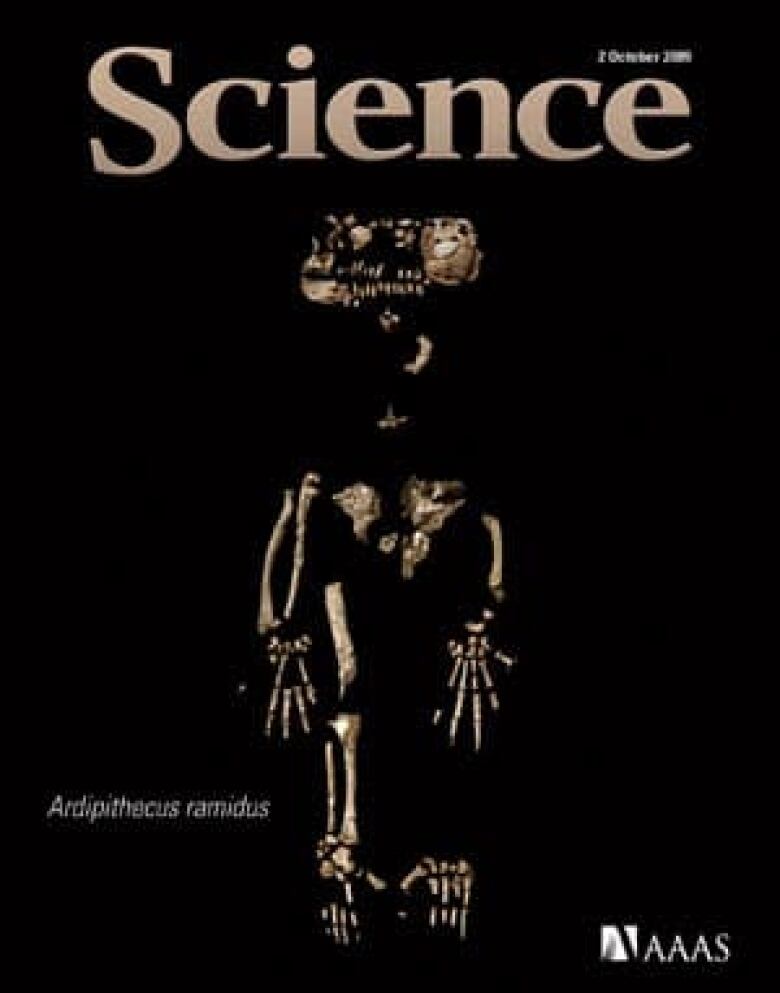Hominid fossil Ardi came a million years before Lucy
The fossilized partial skeleton of a female ground ape that lived 4.4 million years ago is the best view yet of the early evolution of human beings, researchers say.

The nearly intact skeleton is the result of 17 years of excavation and research on the fossilized remains, found in 1992 in the Afar region of Ethiopia.
Scientists say the last common ancestor of humans and chimpanzees, humanity's closest living relative, lived at least six million years ago. Ardi isn't that last common ancestor but it's the closest to it that they've seen, say paleontologists.
The announcement isn't the first time scientists have described Ardipithecus, but the research, including 11 studies from 47 different authors in this week's special issue of the journal Science, is the first thorough investigation of more than 110 fossil specimens, including Ardi.
The skeleton includes pieces of skull, teeth, pelvis, legs, feet, arms and hands.
Before Ardi was found, the earliest well-described hominid was Australopithecus afarensis, whose most famous member another partial female skeleton, nicknamed Lucy lived 3.2 million years ago.
Although Ardi and Lucy lived more than one million years apart, in one way they were neighbours. The fossil remains of Ardi were found just 74 kilometres from where those of Lucy were found in 1974.

After Lucy was found, some scientists expected that an earlier hominid would be more similar to chimpanzees and gorillas, based on Lucy's anatomy and the genetic similarities between chimps and humans.
Ardi is surprising scientists, though, as many of its traits don't appear in living African apes or in humans.
Ardi's limbs and hands don't look like those of chimps and gorillas, but rather like those of extinct apes and monkeys. Researchers concluded that Ardi didn't walk on its knuckles, as gorillas do, and didn't swing or hang from tree branches, as chimps do.
"In Ardipithecus we have an unspecialized form that hasn't evolved very far in the direction of Australopithecus. So when you go from head to toe, you're seeing a mosaic creature that is neither chimpanzee, nor is it human. It is Ardipithecus," said lead author Tim White of the University of California Berkeley, in a statement.
Researchers concluded that both the human branch and the ape branch of the family tree have evolved significantly from its common ancestor, and chimps can no longer be thought of as a "proxy" for that common ancestor.
"It has been a popular idea to think humans are modified chimpanzees," said Owen Lovejoy, the study's other lead author.
"From studying Ardipithecus ramidus, or Ardi, we learn that we cannot understand or model human evolution from chimps and gorillas," said Lovejoy.
White said Charles Darwin, the British naturalist who first conceived of evolution through natural selection from a common ancestor, could have predicted this result.
"Darwin was very wise on this matter," said White. "Just like Darwin appreciated, evolution of the ape lineages and the human lineage has been going on independently since the time those lines split, since that last common ancestor we shared," White said.
Ardipithecus is described as a small "ground ape," living in wooded areas, and walking on all fours in trees, but on two legs on the ground. Ardi is estimated to have weighed about 50 kilograms and stood about 120 centimetres tall.
If the researchers are correct and Ardi both climbed in trees and walked on the ground, it would provide evidence against the older theory that human ancestors started to walk after moving to an open savanna environment.
Ardipithecus was probably omnivorous, based on an examination of fossil teeth.
Other fossils found near the remains give an indication of the environment where it lived. The fossils include fig and hackenberry trees; birds, such as owls and peacocks; snails; small mammals, including bats, shrews and mice; and larger animals, such as hyenas, bears, rhinoceroses, elephants, monkeys and antelope.
CBC Radio'sQuirks& Quarkswill have aninterview with the study's lead authors, Tim White and Owen Lovejoy, on Oct. 3at noon.












_(720p).jpg)


 OFFICIAL HD MUSIC VIDEO.jpg)
.jpg)



























































































